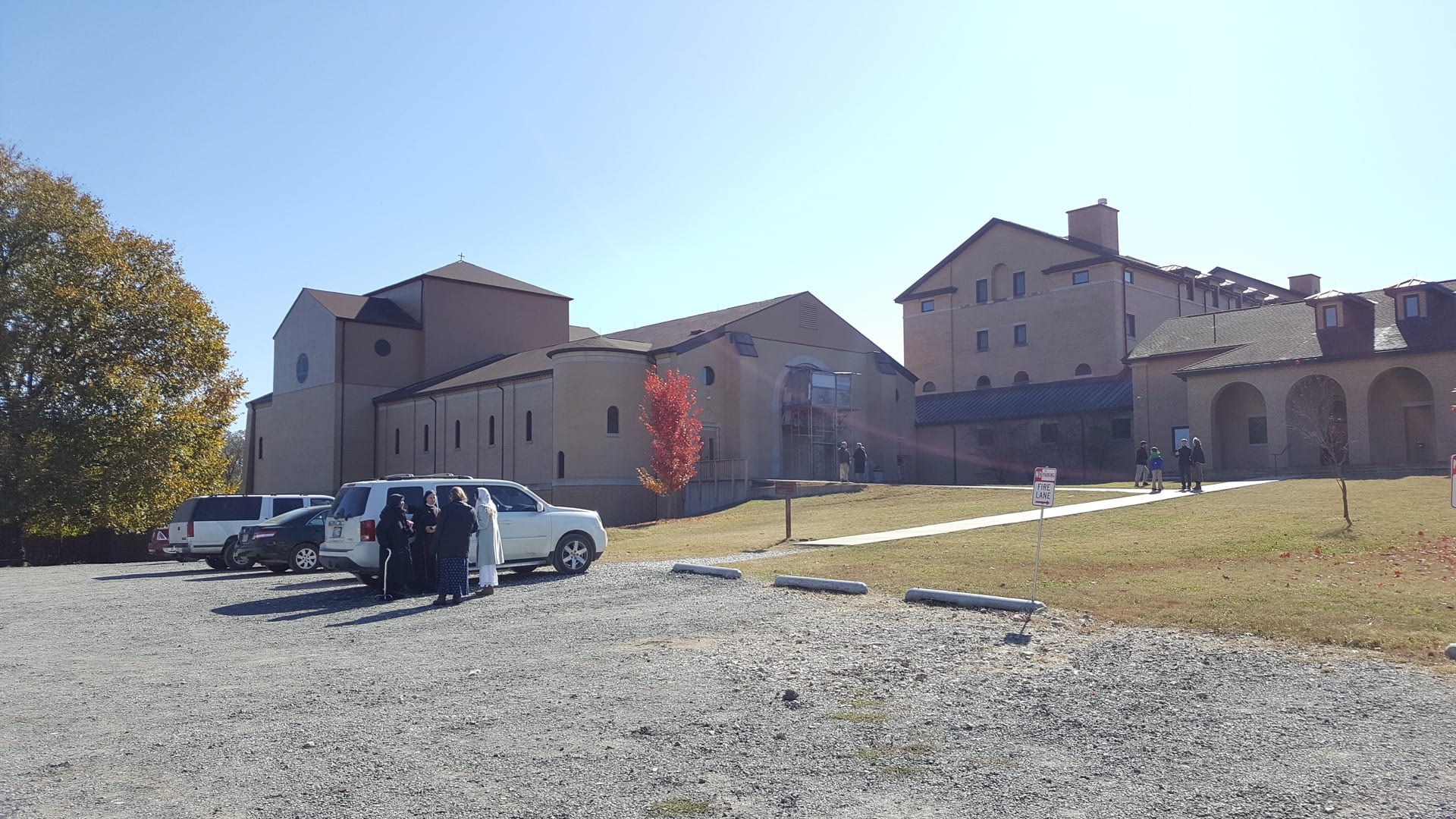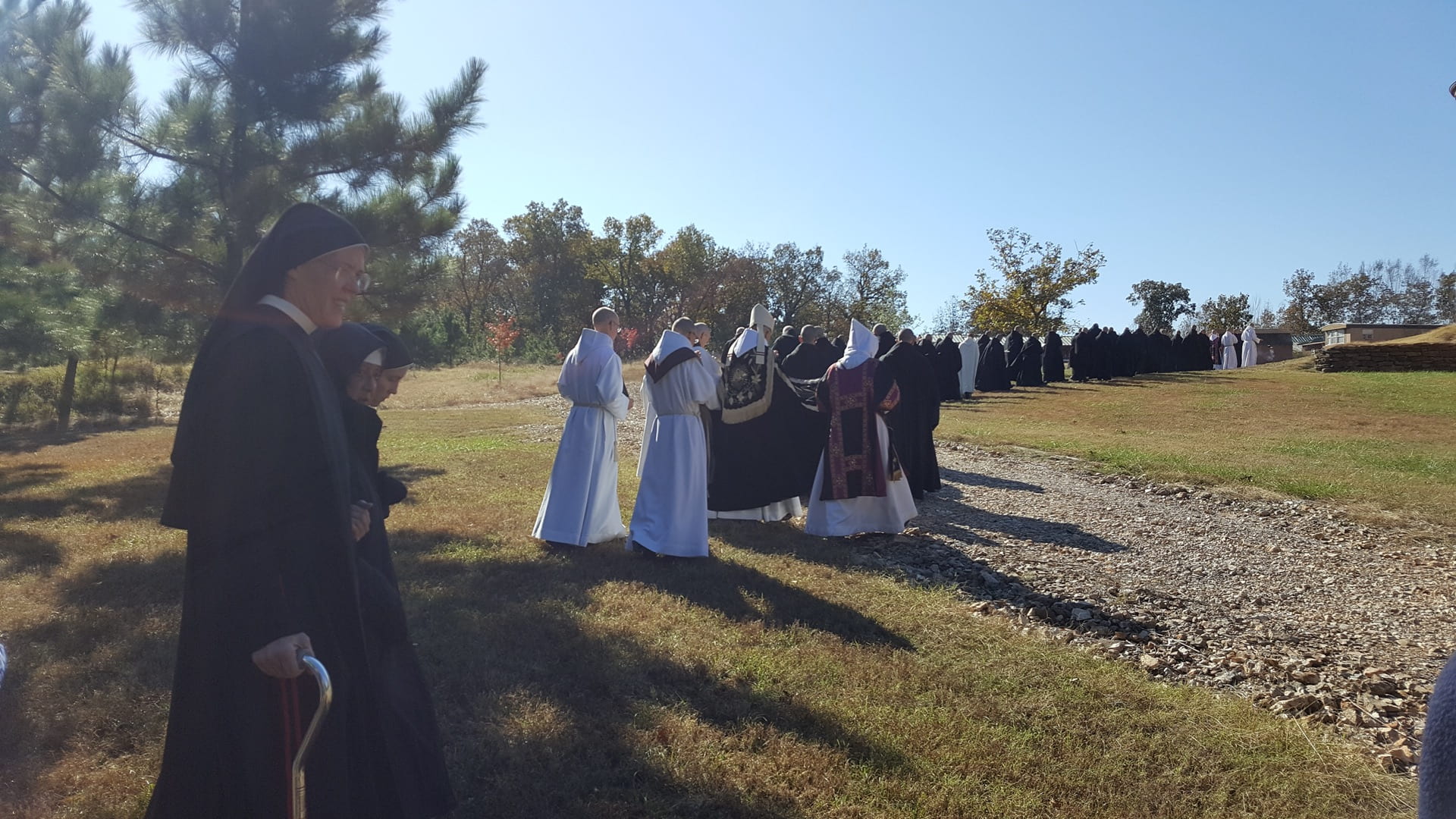
“Listen carefully, my son, to the master’s instructions, and attend to them with the ear of your heart.” These are the first lines of The Rule of St. Benedict, a 6th-century guide to monastic life. The Rule encourages discipline and asceticism, and this begins, as the text itself, with listening.
“For the Benedictines it’s all about the ear,” said Honors College Dean and medieval scholar Lynda Coon, “and the voice.” Students in Dean Coon’s Honors College seminar “Desert” witnessed the ear and the voice in action on November 2, when they made the trek to Clear Creek Abbey, a Benedictine monastery near Tulsa, Oklahoma, for the Latin All Souls’ Day Mass.
Clear Creek Abbey was established as a priory in 2000, after a group of students in the humanities honors program at the University of Kansas, interested in exploring monasticism, traveled to Fontgombault Abbey in France in hopes of gaining experience to bring back to the United States. The priory was officially declared an abbey in 2010. Here in Tulsa, the monks raise goats, farm vegetables, and sell pottery, books, cheeses, candles and other artisanal wares to raise money. They spend part of their days in prayer and contemplation, and the rest of their days working – aided by tractors, four-wheelers, and the internet (but only when absolutely necessary). It’s ancient desert asceticism updated to complement 21st-century life.
“Desert asceticism appears in the early church – there are mentions of it in both the Old and New Testament. In a monastery, you’re creating a desert in the mind. It’s a sort of spatial isolation, with no distractions,” explained honors history major Elizabeth Cooper.

“You can’t always achieve the extremes of physical isolation,” history and psychology major Michael Fuhrman added. But in a place like Clear Creek Abbey, in the rural, wooded hills near Tulsa, “It’s a realistic and attainable mental isolation.”
This was in prominence during the Mass, as about 50 black-robed monks with shaved heads chanted in solemn Latin. A small congregation followed along in the unheated stone church as the temperature outside slowly inched its way above freezing. The morning consisted of the special All Souls’ Day Mass, the Communion, a procession to the cemetery, then finally the Litany of the Dead and the Sacristy, all expressed in Latin. Every time a brother blundered a word or made some other mistake, he knelt in penitence before once again taking his place among the monastery’s ranks.

“The students read The Rule of St. Benedict in class, and they went to Tulsa to see it put into practice,” said Dean Coon. “The monks at Clear Creek follow a very, very conservative model as members of the Congregation of Solesmes, which has a strong emphasis on chanting as a principle form of praise,” something not often seen in traditional Masses of today.
Political science major William Motazedi felt this difference. “It was interesting how normal and routine it was for the monks,” he said. “For them it’s second nature, but I’ve been Catholic for almost 20 years and I’ve never seen anything like that in my life.“
The monastery itself is housed in a series of sand-colored Romanesque buildings. The nave of the church is still under construction, but the compound is impressive nonetheless. Because many of the monasteries in the Benedictine order were established in the 11th and 12th centuries, explained Dean Coon, “The French orders have a strong attachment to the Romanesque. The Gothic is too decadent, and Romanesque buildings have better acoustics.” Which makes the church in Tulsa an ideal location for an order for which the ear and the voice are of primary importance.
“I loved to see the architecture in play with the service,” Fuhrman said. “Hearing and seeing the songs inside versus outside during the procession, you could definitely feel the difference. The building is built to create this atmosphere, and really draw you into the moment.”
And it was only a moment – a two-hour glimpse into a lifetime of religious devotion, a brief ear lent to centuries of chanted praise.
“St. Benedict is the author of the most influential and sustained monastic rule in the West, from 11th-century Italy to Oklahoma in 2019,” said Dean Coon. “That’s a pretty impressive trajectory.”
